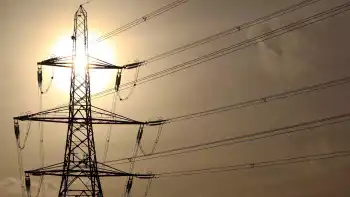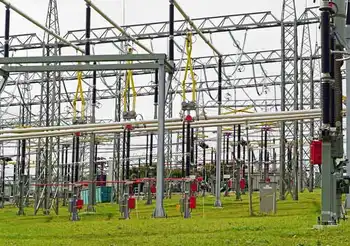ABB realigns automation divisions for 2010
By Electricity Forum
NFPA 70e Training
Our customized live online or in‑person group training can be delivered to your staff at your location.

- Live Online
- 6 hours Instructor-led
- Group Training Available
The business units currently in the Automation Products and Robotics divisions will be regrouped into two new divisions – Discrete Automation and Motion, and Low Voltage Products. The Process Automation division will remain unchanged except for the addition of the instrumentation business from the Automation Products division.
“ABB’s automation businesses with their focus on productivity and energy efficiency have tremendous scope for growth,” said Joe Hogan, ABB’s chief executive officer. “We have strengthened the market approach by grouping together businesses with similar customers, technologies and service models, which will help us accelerate the development of solutions for our customers.”
The new divisions will be comprised as follows:
• The new Low Voltage Products division includes businesses producing mainly low-voltage electrical equipment that is sold to wholesalers, original equipment manufacturers as well as system integrators, and has moderate service requirements. The division had 2008 pro-forma revenue of $4.8 billion and about 19,000 employees;
• The new Discrete Automation and Motion division includes products and systems targeted at discrete manufacturing applications, such as robotics and programmable logic controllers (PLCs), and providing motion in plants, such as motors and drives. These businesses help customers to increase the productivity and energy efficiency of their assets. It also includes a significant offering for the renewable sectors of solar and wind, as well as the rail segment. The businesses sell mainly to original equipment manufacturers, system integrators and directly to end users, and require a more intensive, tailored level of service. The division had 2008 pro-forma revenue of $6.6 billion and also about 19,000 employees.
Process Automation will remain unchanged except for the addition of ABBÂ’s instrumentation business, currently part of the Automation Products division. The move will strengthen the divisionÂ’s process automation platform as instruments measuring temperature, flow, pressure, etc. are key to optimizing industrial processes. The division had 2008 pro-forma revenue of $8.4 billion and about 29,500 employees.
ABB intends to provide pro-forma orders, revenues and earnings before interest and taxes (EBIT) for the period 2007 to 2009 under the new structure when it reports its fourth-quarter results in February next year. The company will also update at that time the divisional guidance on its 2007-2011 targets, to align them with the new organization.
The reorganization of the automation businesses will be accompanied by several related leadership changes as of January 1.
Tom Sjökvist, currently responsible for Automation Products, will become head of the new Low Voltage Products division. Sjökvist has provided successful leadership for the low-voltage business for many years and has driven the Automation Products division to new levels of profitability.
Ulrich Spiesshofer, currently responsible for Corporate Development on the Executive Committee, has been appointed to run the Discrete Automation and Motion division. Spiesshofer, who joined ABB in 2005, has led ABBÂ’s strategic growth initiatives such as its service activities, and has played a key role in managing the companyÂ’s global footprint optimization efforts and its $2-billion cost take-out program.
Anders Jonsson, currently responsible for the Robotics division, will have an Executive Committee role with responsibility for continuing the implementation of ABBÂ’s current cost take-out program as well as the companyÂ’s Global Footprint program, which aligns ABBÂ’s resources with the companyÂ’s growth opportunities. Jonsson has successfully repositioned the robotics business for long-term profitable growth.
Veli-Matti Reinikkala remains head of the Process Automation division.











